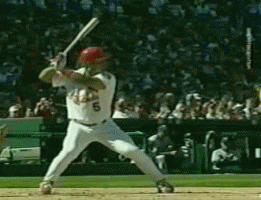Has anyone looked into what happens when you swing keeping your front shoulder elevated?
Original Post
Replies sorted oldest to newest

quote:Originally posted by NDD:
Can you post a picture of what you are talking about please. I'd love to see it.
quote:It looks like Ryan Howard keeps his shoulder high during the load.
I know that Guerrero is someone that may be an example
quote:Has anyone looked into what happens when you swing keeping your front shoulder elevated?
quote:Originally posted by floridafan:
No where did I indicate raising the front shoulder above the back shoulder.
quote:The point is to not drop the front shoulder while loading.

quote:Originally posted by floridafan:
Perhaps there is, lol!
quote:Originally posted by floridafan:
No where did I indicate raising the front shoulder above the back shoulder. The point is to not drop the front shoulder while loading.
Any advice that my son has received from this gentleman has resulted in my son being drafted and being a leading hitter in the White Sox Minor Leagues. So, I am not interested in questioning his instruction. However, I did think I would share it for discussion, so it is alright to criticize and question the approach.
quote:Originally posted by floridafan:
The video clip you show here is a perfect example of what he is teaching.
I know that there is a slight dip in this clip, but generally the front shoulder stays up. At least it appears that way to me.
The verbal cue, and what results are not always the same, to your point of dropping too much, and correcting that mistake, by saying keep the front shoulder up.
I know there was a dramatic difference in production after he made the adjustment. Line drives became more elevated and carried better.
quote:Originally posted by floridafan:
Oddly enough we are not PCR adherents. Very much focused on "hands" and power line.
quote:Originally posted by NDD:
floridafan,
Looking at the video of your son, yes: there is common ground. As I suspected, the "argument" is semantics and cues. Nice PCR swing.